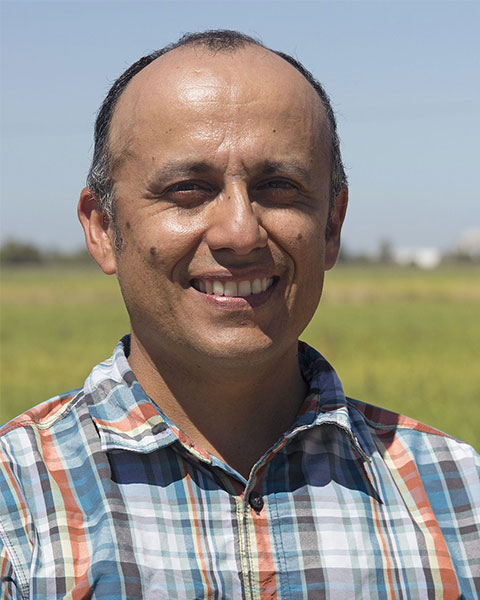Student 10-Minute Presentation
Plant-Insect Ecosystems
Student
Student Competition
Fish are friends, shrimp are food: Mosquitofish (Gambusia affinis) as a potential biological control agent for tadpole shrimp (Triops longicaudatus)
- MH
Madison Hendrick
PhD Candidate
University of California
Sacramento, California 
Luis Espino
Farming Systems Advisor
University of California
Oroville, California
Ian Grettenberger
Assistant Cooperative Extension Specialist
University of California
Davis, California
Presenting Author(s)
Co-Author(s)
California rice fields are but one example of a crop system in which integrated pest management options are limited. In the first few weeks of the growing season, growers must contend with tadpole shrimp (Triops longicaudatus), the primary pest of rice. Tadpole shrimp have desiccation resistant eggs that hatch when introduced to water. By the time rice is planted in the fields, tadpole shrimp are already present and capable of damaging the crop. Growers are limited in their control options, and typically rely on pyrethroid insecticides. Frequent use of chemical pesticides can lead to issues such as resistance and environmental contamination. California rice is a system that would greatly benefit from the development of a biological control program to reduce chemical inputs and help growers better practice IPM. We concluded our project using mosquitofish (Gambusia affinis) as a biological control agent for tadpole shrimp. We conducted trials to test the density of fish and the application timing needed to achieve control. Both trials used 100sqft rings that were built before the fields were flooded, then fish were added after the flood at the appropriate time. This project demonstrated the potential of mosquitofish as a biological control agent in this system. California rice growers are limited in their management options. If we are to practice better IPM, more management options need to be available to them.

.png)

